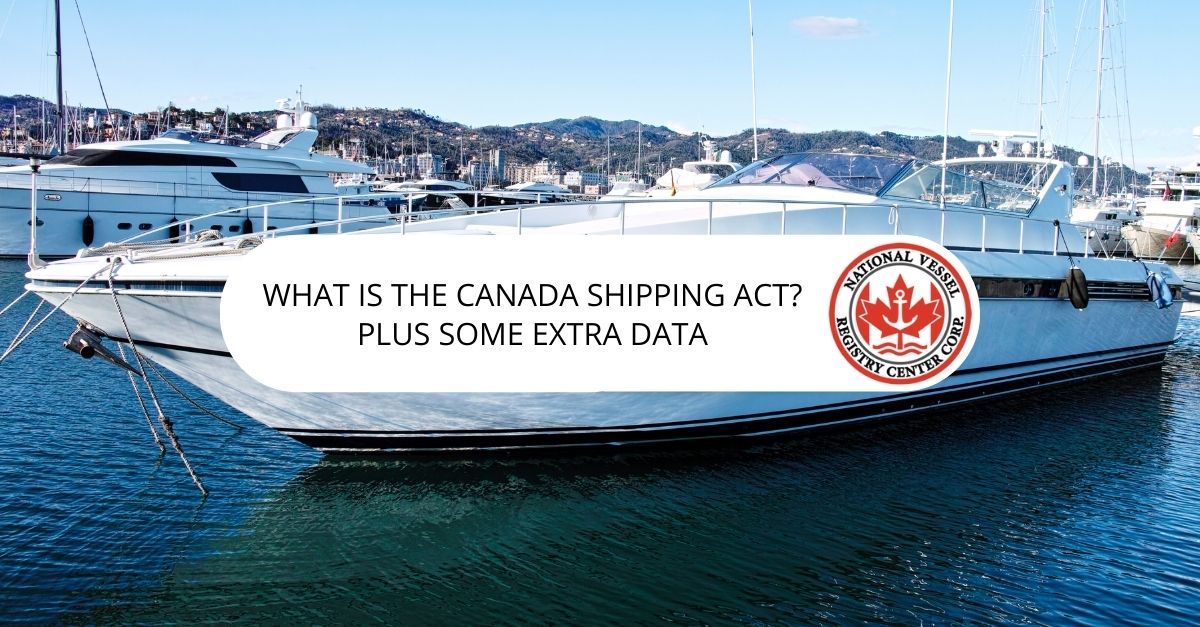The Canada Shipping Act (CSA), implemented in 2001, represents the law that governs marine transport and safety. It also includes rules that focus on preserving the environment. The 1894 British Shipping Act was the basis for the original CSA. Since 2001, the CSA has been revised, updated, and reorganized to keep pace with current recreational and commercial maritime activities.
Whether you operate a commercial vessel or spend time fishing for recreation, you need to get acquainted with the CSA. The following details provide an overview of the rules the CSA supports.
The Canada Shipping Act: Learning the Language
The Canadian Shipping Act introduces you to a variety of phrases, such as “approved representative,” “Canadian vessel,” “foreign vessel,” and “government vessel” – each of which are important to understand and know.For example, any boat not registered as a Canadian pleasure craft or a Canadian commercial vessel is regarded as foreign, whereas a Canadian-owned vessel is one that is registered and operated only inside the country.
The CSA addresses gross tonnage as well, or the volume of a vessel , as calculated by a tonnage measurer in accordance with the Act’s provisions for the measurement.
To paraphrase the Act’s Pilotage Act, the person in command of a vessel other than a certified pilot is called its “master” (section 1.1).Boat passengers represent anyone who rides on a boat and pays a fee. Otherwise, they’re called guests.
While pleasure craft are classified as non-safety convention vehicles, safety convention vessels are those ships which require inspection before they can embark and ship items or transport passengers.
The Canadian Shipping Act primarily covers the interests of companies incorporated in Canada or Canadian residents who own boats.
The CSA is also designed to establish the rules for registration and licensing – regulations that are applied to meet compliance and support marine safety.

The CSA and Marine Transportation: How Regulators Enforce the Rules
Because of the CSA, shipping and pleasure craft authorities can enforce marine rules connected with the health and safety of shipping personnel and pleasure craft owners. Marine ecology and transport efficiency are also emphasized.
The Minister of Transport’s Role
The Minister of Transportation is responsible for overseeing and enforcing the Canada Shipping Act‘s inspections and authorizations.
An inspector may be authorized to conduct an inspection by the Minister of Transportation to check a boat’s hull, its equipment, or check the engine or the boat’s transom
The Department of Transport and the Department of Fisheries and Oceans has set up a system of inspections to ensure pollution prevention and the conservation of marine plant and animal life.
Only inspectors with the appropriate credentials are permitted to do inspections in the field. Inspectors are not held accountable for anything they may mis, as long as they do their job ethically.
How the CSA Defines the Role of an Authorized Representative
Each Canadian vessel must have an “approved representative” who is responsible for acting on behalf of any matter regarding maritime transport. Typically, the owner of a boat or yacht serves as the authorized representative. The approved representative must be one of the boat’s owners if the boat is owned jointly..
Processing Marine Paperwork Under the CSA
The issue of marine documents is also covered under the Canada Vessel Act. Therefore, the Minister of Transportation may approve or reject a document in accordance with the rules established by the CSA.
The CSA directs the Minister of Transport to set the standards for filling out applications for registrations or licensing. In some instances, applicants may need to attach extra paperwork to support their application or an inspection may be scheduled. Exams are also given for certifications.
The CSA and Small Vessel Regulations
Of special importance are the Small Vessel Regulations contained in the CSA. This information emphasizes the issuance of licences to identify operators of pleasure craft. This data supports search and rescue activities as well as law enforcement investigations and marine-related inspections..
Small Vessel Regulations also cover registration activities. Again, registration allows first responders to locate vessels in case of an emergency. In this case, police authorities find registered boats by their name and port of registry.
Whether a person registers or licenses their boat, either activity helps emergency teams and police authorities to work more efficiently.
Proposing and Charging Fees
In addition, the Canada Shipping Act regulates the assessments for charges and penalties for the owners of both Canadian and non-Canadian vessels, including solo and joint owners. Some services are offered free of charge, such as services that cover registration, certain changes or renewals.
Consider Your Rights as a Pleasure Craft and Commercial Boat Owner
The purpose of the Canada Vessel Act is to make boating on the country’s waterways a safer experience for everyone. You may use it to better understand your responsibilities and rights as an owner and operator of a commercial or pleasure craft vessel.
Use the TCA to give you a clearer understanding of using the National Vessel Registry’s online services.

